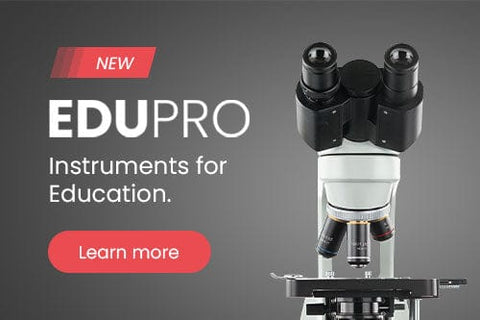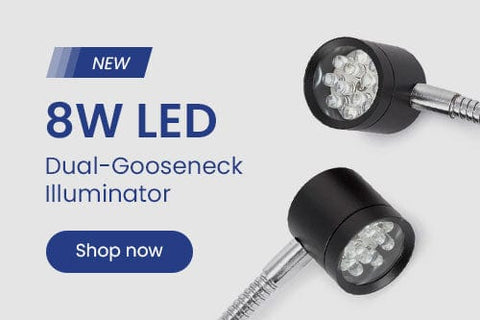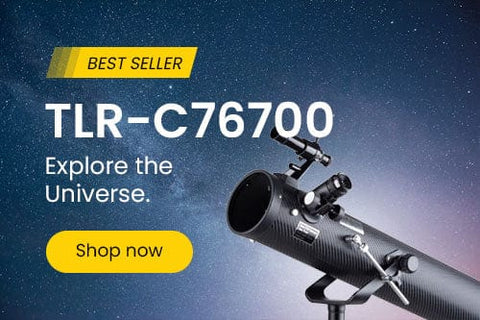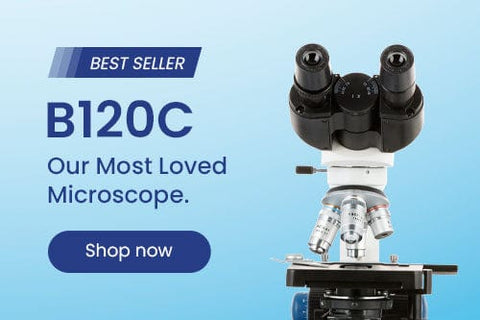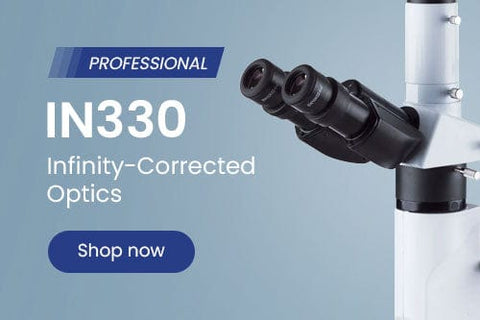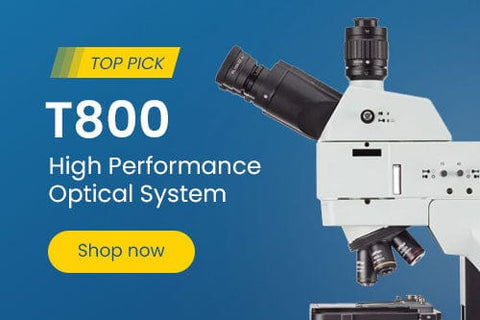- Microscopes
- Cameras
- Lab Supplies & Equipment
- Shop By Brand
- Lab Supplies by Category
- Analyzer Consumables
- Balances
- Bags
- Beakers
- Bench Scale Bases
- Bottles
- Bottletop Burettes
- Bottletop Dispensers
- Boxes
- Blank Microscope Slides & Cover Slips
- Blood Collection
- Caps
- Carboys
- Centrifuges
- Centrifuge Tubes
- Cold Storage
- Containers
- Cryogenic Vials
- Culture Tubes
- Cylinders
- Dispensers
- Digital Dry-Baths
- ESR Products
- False Bottom Tubes
- Flat Bottom
- Funnels
- Gel Documentation
- Glassware
- Glass Test Tubes
- Histology
- Homogenizers
- Hotplates-Stirrers
- Inoculation Loops and Spreaders
- Liquid Handling Products
- Manual-Electronic Pipettors-Pipettes
- Microscope Slides
- Overhead Stirrers
- Pipette Controller (Serological Filller)
- Pipette Tips
- Plastic Test Tubes
- PCR Tubes, Strips & Plates
- Racks
- Repeater Pipettor
- Rockers
- Rotary Evaporators
- Serological Pipettes
- Shakers
- Spectrophotometers
- Syringe Tips
- Sample Tubes
- School/Classroom Supplies
- Screwcap Test Tubes
- Self-Standing
- Test Tube Racks
- Test Tubes & Vials
- Transport & Storage Tubes
- Thermal Mixers
- Transfer Pipets
- Urinalysis
- Vacuum Pumps
- Weighing Dishes
- Lab Equipment
- Balances
- Bench Scale Bases
- Centrifuges
- Digital Dry-Baths
- Gel Documentation
- Homogenizers
- Hotplates-Stirrers
- Overhead Stirrers
- Pipettors
- Rockers
- Rotary Evaporators
- Shakers
- Serological Pipettes
- Spectrophotometers
- Thermal Mixers
- Vacuum Pumps
- Liquid Handling Products
- Manual-Electronic Pipettors-Pipettes
- Pipette Tips
- Racks
- Pipette Fillers-Controllers
- Repeater Pipettor
- Syringe Tips

Cost effective products and solutions designed to improve laboratory efficiency, safety and results.
SHOP BENCHMARK SCIENTIFIC >
- Slides & Accessories
- Slides
- Cameras
- Illuminators
- Adapters
- Eyepieces / Objectives
- Bulbs
- Magnifying Lamps
- Monitors and Tablets
- View All Categories
- Adapters
- DSLR Adapters
- USB Camera Adapters
- Ring Light Adapters
- Power Adapters
- Barlow Lens
- Books & Experiments Cards
- Bags & Cases
- Bags
- Cases
- Cameras
- Circuit Board Holders
- Cleaning Kits
- Condensers
- Darkfield
- Phase Contrast Kits
- Polarizing Kits
- Dust Covers
- Eye-Guards
- Eyepieces
- 20mm
- 23mm
- 30mm
- 30.5mm
- Filters
- Microscope Filters
- Illuminator Filters
- Fluorescence Kits
- Conversion Kits
- Filter Cubes
- Focusing Racks
- Fuses
- Illuminators
- Bulbs
- LED Illuminators
- Fiber Optic Illuminators
- Fluorescent Illuminators
- Ring Lights
- Stand Lights
- Goosenecks
- Gooseneck Attachments
- Immersion Oils
- Loupes
- Magnifying Lamps
- Clamp Lamps
- Desktop Lamps
- Rolling Stand Lamps
- Mechanical Stages
- Monitors and Tablets
- Calibration Slides & Stage Micrometers
- Stage Warmers
- Stain Kits
- Stands
- Articulating Arm Stands
- Boom Stands
- Table Stands
- Tweezers
- Other Accessories
- Shop By Industry
- Shop By Industry
- Botany
- Agronomy & Forestry
- Horticulture
- Phytopathology
- Chemistry
- Biochemistry
- Biotechnology
- Cannabis
- Pharmaceutics
- Consumables
- Beer & Wine
- Cosmetics
- Food & Beverage
- Electronics
- Circuit Boards & General Electronics
- Mobile Phone Repair
- Semiconductors & Wafers
- Environmental
- Asbestos
- Ecosystem Research
- Mud Logging
- Soil Treatment
- Water Treatment
- Forensics
- Ballistics
- Fingerprint Analysis
- Genetic Identification
- Hair & Fiber Analysis
- Handwriting Analysis
- Industrial
- Aerospace
- Automotive
- Dental Lab & Production
- Glass Industry
- Industrial Inspection
- Mechanical Parts
- Paper Industry
- Petrochemical
- Plastics
- Printing Industry
- Quality Assurance & Failure Analysis
- Textiles & Fibers
- Tool Making
- Wood Production
- Jewelry & Gemology
- Engraving
- Gemology
- Jewelry Repair
- Stone Setting
- Watch Repair
- Hobby
- Coins & Collecting
- Stamps
- Modeling & Assembly
- Sculpting
- Repair
- Telescopes
- Metallurgy
- Archaeology
- Geology
- Mining
- Petrology
- Medical & Microbiology
- Anatomopathology
- Bacteriology
- Biochemistry
- Cell Culture
- Cytology
- Dental Microbiology
- Dermatology
- Dissection
- Gout & Rheumatology
- Hair & Fiber Analysis
- Hair Transplant
- Fluorescence
- Hematology & Live Blood Analysis
- Histopathology
- Mycology
- Medical Devices
- Microsurgery
- Neuropathology
- Oncology
- Parasitology
- Pathology
- Semen Analysis
- Virology
- Veterinary & Zoology
- Breeding & Semen Analysis
- Entomology
- Fecal Smears & Floats
- Marine Biology
- Ornithology
- Veterinary Medicine
- Zoology
- Shop By Industry
- Students
- Telescopes
- Buy With Prime
- Sale
- Compound Microscopes
- Shop By Brand
- AmScope
- Euromex
- Omax
- Shop by Head Type
- Binocular
- Monocular
- Trinocular
- Multi-head & Training
- Shop By Specialty
- Brightfield
- Darkfield
- Phase Contrast
- Inverted
- EPIfluorescence
- Polarizing
- Digital Integrated
- Metallurgical
- Shop By Application
- Education
- Research
- Veterinary
- Compound With Digital Head
- Shop Best Sellers
- Shop All Compound
- Stereo Microscopes
- Shop By Brand
- AmScope
- Euromex
- Shop By Objective Type
- Fixed Power
- Zoom Power
- Single Lens
- Common Main Objective
- Shop By Stand Type
- Articulating Arms
- Boom Stands
- Gooseneck Stands
- Table Stands
- Other Stands
- Shop By Head Type
- Binocular
- Monocular
- Trinocular
- Simul-Focal
- Shop By Industry
- Video Inspection
- Industrial Inspection
- Microscope Heads
- Shop Stands
- Articulating Arm
- Boom Stands
- Table Stands
- Stereo With Digital Head
- Shop Best Sellers
- Shop All Stereo
- Specialized Microscopes
- Digital Microscopes
- Kids, Student Microscopes
| Amscope Team
How To Calculate Field of View for Your Microscope

From the life sciences and medicine to semiconductors and jewelry, microscopes have become essential tools for many industries. They bring details to light that the naked eye could never see, but the insights viewers gain can be skewed if they don't know how large the image is. That's what field of view expresses.
A measurement of the diameter of the visible image, field of view (FOV) clarifies how much of the object the viewer is actually observing. This allows the viewer to analyze the specimen more clearly, perform any needed operations with greater precision, and have a better understanding of what they see. In this article, we'll show you how to calculate field of view, what it is, and some FOV differences for compound and stereo microscopes. Here's a deeper look.
What Is the Field of View of a Microscope?
FOV is simply a measurement of the diameter of the image that the viewer can see. It's typically expressed as the diameter in millimeters of the observer's field of vision, and is used to quantify the size of the object under inspection.
Why Is the Field of View Important?
Whether you're examining a cell with an optical microscope or soldering components onto a printed circuit board (PCB), knowing the size of the object in view helps you complete your work more effectively. For example, knowing the size of a microscope field can help the observer determine how large an organelle within a microorganism is, and could also give other insights about important image features.
How To Calculate a Compound Microscope's Field of View
Calculating a microscope’s field of view differs somewhat for compound and stereo microscopes. Both involve a calculation based on the total magnification of the microscope and a parameter on the lens, but stereo microscopes have other factors to consider.
1. Find the Field Number (FOV Diameter) and Objective Magnification
The first step in determining the FOV is to find the field number on the objective lens. This number gives the diameter of the microscope field, assuming no other eyepieces or magnifiers are added.
The field number can be easily located on a microscope, as it's typically written on the side of each lens, next to its magnifying power. For example, if the numbers on a microscope's objective lenses are 10X/15, 40X/20, and 100X/25, the objective magnifications would be 10X, 40X, and 100X, while the field numbers would be 15, 20, and 25, respectively.
2. Use the FOV Equation
Once the field number and magnifying power of each lens in use are known, a simple equation exists to help observers find the total field size of the image in view. If the objective lens is the only magnifier in use, the field size is equal to the field number divided by the objective magnification of the lens, or:
FS = FN/MO, where FS = field size, FN = field number, and MO = objective magnification
If an eyepiece is added, the field size is equal to the field number divided by the total magnifying power of the entire assembly. Since magnifying power compounds geometrically, the total magnifying power is the product of the microscope eyepiece and microscope objective lens. In this case, the field size can be expressed as:
FS = FN/(ME*MO), where FS = field size, FN = field number, ME = eyepiece magnification, and MO = objective magnification
As an example, a microscope having an objective lens with 100X magnification power and a field number of 25 mm would have a field size of 25 mm/100, or 0.25 mm. Similarly, if the same microscope added an eyepiece having a magnification power of 20X, the field size would be 25 mm/(100*20), or 0.0125 mm. Because the field size can be quite small, instead of expressing field size in terms of millimeters, some observers may multiply their value by 1,000 to convert their units to micrometers
How Field of View Changes for Stereo Microscopes With Auxiliary Lenses
In the above equation, note that field of view is inversely proportional to magnification power; a lower total magnification allows for a larger field, and a higher magnification results in a smaller field. This is to be expected, because the closer an observer zooms into an object, the smaller the window they view.
The field observation window also decreases quite rapidly when auxiliary lenses are added. A single eyepiece with a magnification power of 10X reduces the field of view by a factor of 10, so observers adding extra lenses should know just how much width they'll lose.
FOV Considerations When Using a Higher Power Magnification
The tradeoff between FOV and magnification means that observers have several factors to take into consideration when they choose how much power is right for their project. Two of these factors are resolution and depth of field.
Defined as the minimum distance at which an observer can distinguish two adjacent points, resolution increases with magnification. That means especially detailed objects may require the superior resolution that comes with higher magnification, even if the FOV is reduced.
The 3D images that stereo microscopes provide also require consideration of depth of field, or DOF. The calculations aren't as straightforward as those for FOV, but a higher magnification is directly proportional to a greater depth of field. As with resolution, if observers need to distinguish between multiple layers of their specimen, they may need higher magnification at the expense of FOV. However, stereo microscopes typically have a larger default FOV than conventional compound microscopes, so the tradeoff is less with this type of scope.
Turn to AmScope for High-Quality Optical Components
At AmScope, we provide high-quality compound light microscopes and stereo microscopes, as well as a wide collection of eyepieces and lenses. We have the optical components to help you view your project at whatever field of view or magnification it needs. Check out our catalog today, and zoom in to the product that's right for you.
Free Shipping on orders $149+
Same day shipping for orders within the contiguous U.S.
Easy Returns
Hassle-free 30-day return policy. 100% satisfaction guarantee.
Quality Products
5-year warranty on AmScope microscopes.
Got a question?
Speak to our team of experts and find the products you need.






